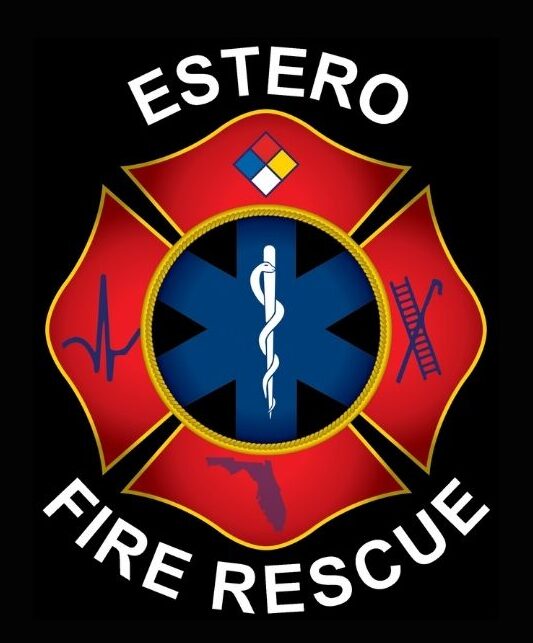 It’s that time of year – Back-to-School time! The time of year that parents look forward to and children dread! Help to make this school year accident and injury free with these helpful tips from the Consumer Products Safety Commission, the American Academy of Pediatrics and Estero Fire Rescue:
It’s that time of year – Back-to-School time! The time of year that parents look forward to and children dread! Help to make this school year accident and injury free with these helpful tips from the Consumer Products Safety Commission, the American Academy of Pediatrics and Estero Fire Rescue:
Drawstrings on Jackets and Sweatshirts
There should be no drawstrings on hoods or around the neck. Drawstrings at the waist or bottom of jackets should extend no more than 3 inches to prevent catching in car and school bus doors or getting caught on playground equipment.
Loops on Window Blind Cords
Cut the loop and attach separate tassels to prevent entanglement and strangulation in window blind cords. One child a month strangles and dies in the loop of a window blind pull cord or inner cord. Keep cords out of children’s’ reach. Install cord stops to prevent formation of loop in inner cord.
 Soccer Goals
Soccer Goals
Make sure that the athletic director or the custodian anchors the soccer goals into the ground so that the soccer goal will not tip over and crush a child.
Playgrounds
Check the surfaces around playground equipment at schools and parks to make sure there is a 12-inch depth of wood chips, mulch, sand, or pea gravel, or mats made of safety-tested rubber or fiber material to prevent head injury when a child falls. Each year, more than 200,000 children go to U.S. hospital emergency rooms with injuries associated with playground equipment. Most injuries occur when a child falls from the equipment onto the ground. More playground safety tips…
Recalled Products
Make sure your child’s school has up-to-date information on recalled toys and children’s products. Schools, daycare providers, and parents can receive recall information by e-mail, or in the regular mail free of charge by calling the CPSC hotline, or writing to the U.S. Consumer Product Safety Commission, Washington, D.C. 20207.
Travel Tips
Traveling to and from school can pose special concerns, especially for young children. Review safety tips with your children for their transportation to make sure that they have a happy and safe school year.
School Bus
If your child’s school bus has lap/shoulder seat belts, make sure your child uses one at all times when in the bus. If your child’s school bus does not have lap/shoulder belts, encourage the school to buy or lease buses with lap/shoulder belts. Wait for the bus to stop before approaching it from the curb. Do not move around on the bus. Check to see that no other traffic is coming before crossing. Make sure to always remain in clear view of the bus driver.
Car
All passengers should wear a seat belt and/or an age- and size-appropriate car safety seat or booster seat. Your child should ride in a car safety seat with a harness as long as possible and then ride in a belt-positioning booster seat. Your child is ready for a booster seat when she has reached the top weight or height allowed for her seat, her shoulders are above the top harness slots, or her ears have reached the top of the seat.
Your child should ride in a belt-positioning booster seat until the vehicle’s seat belt fits properly (usually when the child reaches about 4′ 9″ in height and is between 8 to 12 years of age). This means the shoulder belt lies across the middle of the chest and shoulder, not the neck or throat; the lap belt is low and snug across the thighs, not the stomach; and the child is tall enough to sit against the vehicle seat back with her legs bent at the knees and feet hanging down.
All children under 13 years of age should ride in the rear seat of vehicles. Remember that many crashes occur while novice teen drivers are going to and from school. You may want to limit the number of teen passengers to prevent driver distraction. Do not allow your teen to drive while eating, drinking, or talking on a cell phone.
Bike
Always wear a bicycle helmet, no matter how short or long the ride. Ride on the right, in the same direction as auto traffic. Use appropriate hand signals. Respect traffic lights and stop signs. Wear bright color clothing to increase visibility. Know the “rules of the road. http://www.aap.org/family/bicycle.htm
Walking to School
Make sure your child’s walk to a school is a safe route with well-trained adult crossing guards at every intersection. Be realistic about your child’s pedestrian skills. Because small children are impulsive and less cautious around traffic, carefully consider whether or not your child is ready to walk to school without adult supervision. Bright colored clothing will make your child more visible to drivers.


